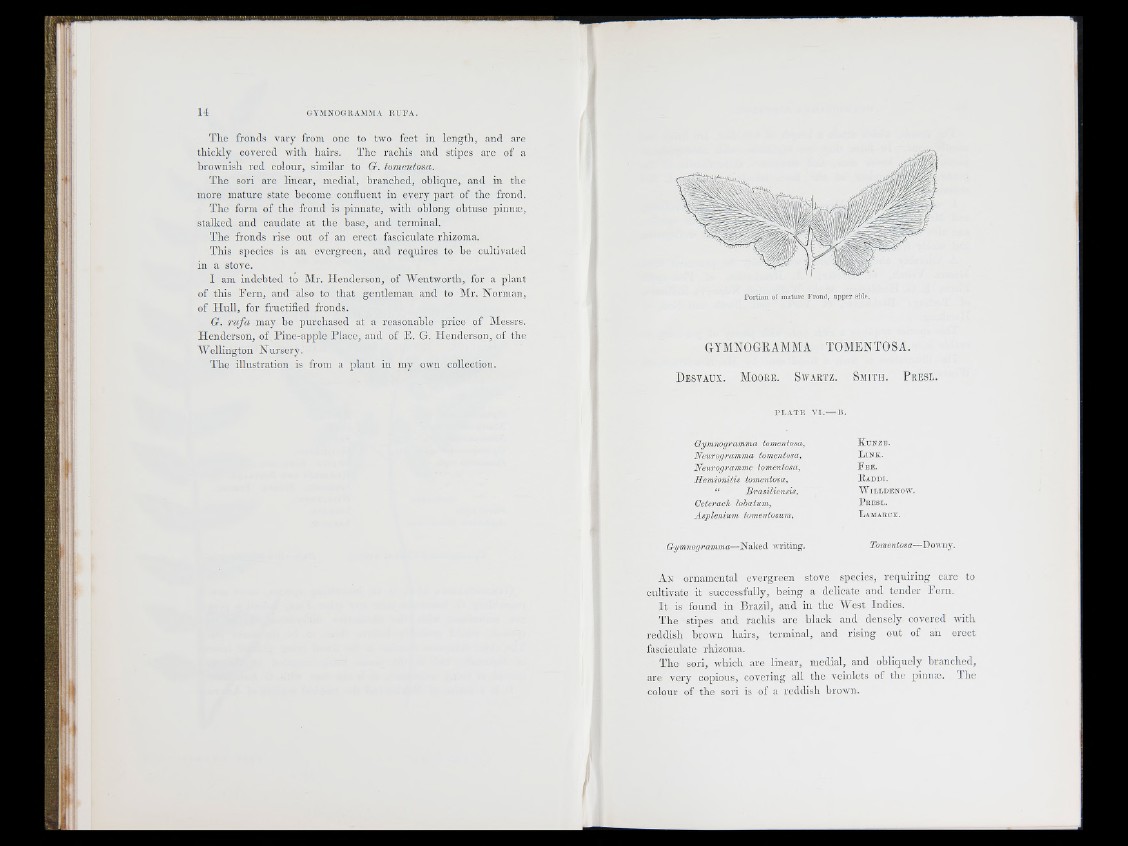
The fronds vary from one to two feet in length, and are
thickly covered with hairs. The rachis and stipes are of a
brownish red colour, similar to G. tomentosa.
T he sori are linear, medial, branched, oblique, and in the
more mature state become confluent in every p a rt of the frond.
The form of the frond is ])innate, with oblong obtuse pinnoo,
stalked and caudate at the base, and terminal.
The fronds rise out of an erect fasciculate rhizoma.
This species is an evergreen, and requires to he cultivated
in a stove.
I am indebted to Mr. Henderson, of Wen tw o rth , for a plant
of this F e rn , and also to th a t gentleman and to Mr. Norman,
of H u ll, for fructified fronds.
G. r u fa may be purchased at a reasonable price of Messrs.
Henderson, of I ’inc-apple Place, and of E. G. Henderson, of the
Wellington N u rs e ry .
T he illustration is from a plant in my own collection.
GYMNOGRAMMA TOMENTOSA.
D esvaux. M oore. Swartz. Sm ith . P resl.
I'L A X E VI.^— 15.
Gymnogramma tomentosa,
Neiirogramma tomentosa.
Neurogramme tomentosa,
llem io n itis tomentosa,
“ Brasiliensis,
Ccterach lobatum,
Asplenium tomeniosum,
K u n z k .
L i n k .
F e e .
K a d d i .
W i l l d e n o w .
P r e s l .
L a m a r c k .
Gymnogramma—jS'aked writing. Tomentosa—Downy.
A n ornamental evergreen stove species, requiring care to
cultivate it successfully, being a delicate and tender l e r n .
I t is found in Brazil, and in the W c ^ t Indies.
The stipes and rachis arc black and densely covered with
reddish brown hairs, terminal, and rising out of an erect
fasciculate rhizoma.
The sori, which arc linear, medial, and obliquely branched,
arc very copious, covering all the veinlets of the pinme. ih e
colour of the sori is of a reddish brown.